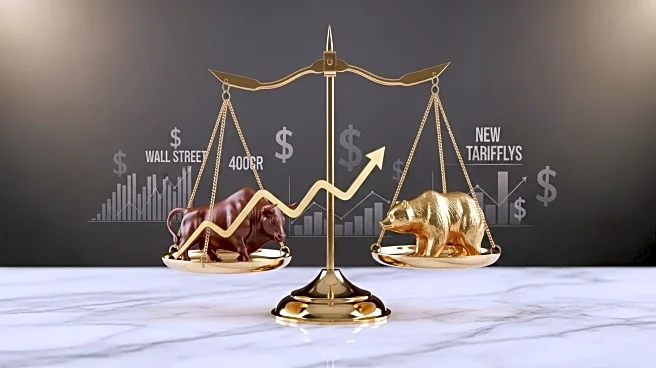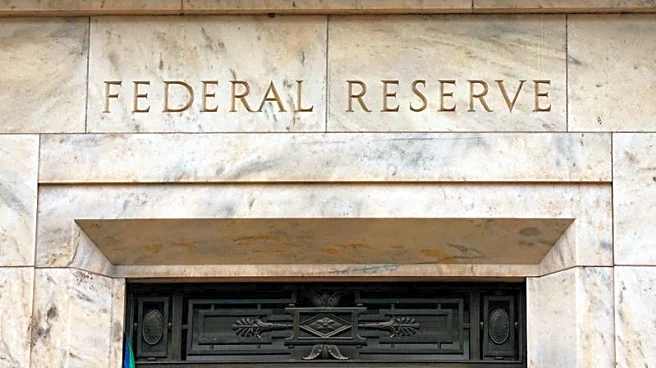What's Happening?
Wall Street is experiencing mixed reactions following the Federal Reserve’s decision to cut interest rates by 25 basis points to 4.00-4.25% in mid-September. Despite the rate cut, inflation remains above target, with August’s CPI at 2.9% year-over-year. The U.S. GDP growth rate was revised to 3.8% for the second quarter, indicating stronger economic performance. However, new tariffs on goods from China and elsewhere are contributing to global inflation fears. The stock market has seen gains, with the S&P 500 up 13% in 2025, but strategists warn of high valuations.
Why It's Important?
The Fed’s rate cut aims to support economic growth amid inflationary pressures, but the persistence of high prices and tariff impacts pose challenges. The stock market’s performance reflects investor optimism, yet high valuations suggest potential volatility. The interplay between monetary policy, inflation, and trade dynamics is crucial for economic stakeholders, influencing investment decisions and corporate strategies. The rate cut may lower capital costs, spurring mergers and acquisitions, as seen in recent corporate deals.
What's Next?
Market participants are closely monitoring upcoming economic data, including inflation reports and corporate earnings, to gauge the Fed’s future policy direction. The potential for further rate cuts and their impact on sectors sensitive to interest rates, such as banking and real estate, will be key areas of focus. Additionally, geopolitical developments and trade negotiations may influence market sentiment and economic forecasts.
Beyond the Headlines
The broader implications of the Fed’s policy decisions and tariff impacts highlight the interconnectedness of global economies. The resilience of the U.S. economy amid trade frictions and inflationary pressures underscores the importance of strategic economic planning and international cooperation. Long-term shifts in trade policies and monetary strategies could redefine economic landscapes and stakeholder priorities.











